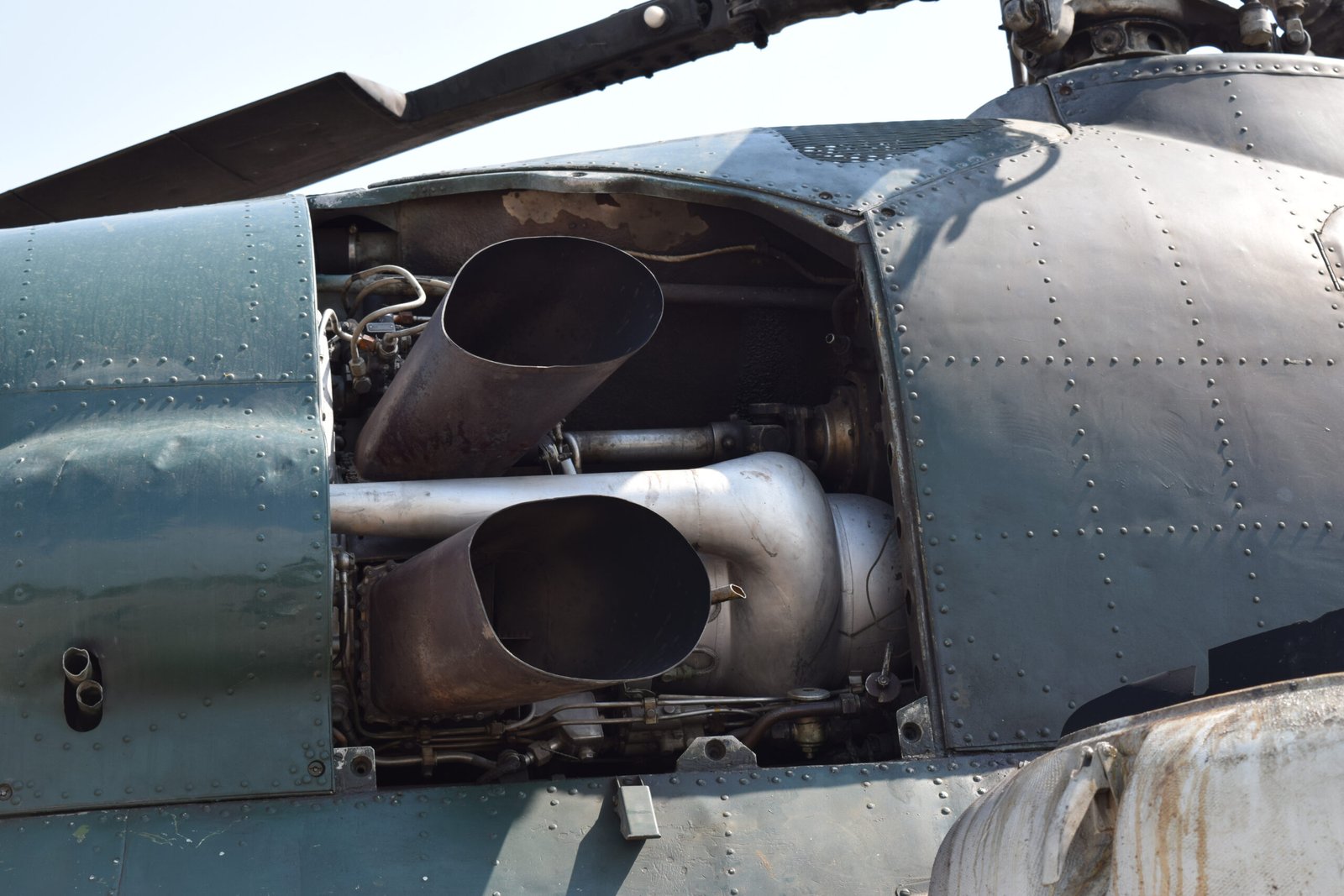Flight Training
The Hidden World of Cockpits: A Pilot’s Perspective on Modern Flight
When you think of aviation, the first images that might come to mind are sleek aircraft soaring through azure skies, passengers basking in comfort, or even the bustling activity at an airport. However, there’s a hidden world that many overlook—the cockpit. It’s a sanctuary of technology, training, and skill where pilots transform dreams of flight into reality.
In today’s aviation landscape, technology plays a pivotal role in shaping how pilots are trained and how they operate. Simulators have advanced beyond simple graphics and basic functions; they now offer immersive experiences that closely mimic real-life flying conditions. High-fidelity simulators replicate everything from turbulence to emergency scenarios, allowing aspiring aviators to hone their skills without ever leaving the ground. These simulators not only save time and resources but also provide invaluable training for managing unexpected situations.
For those looking to dive deeper into aviation knowledge, numerous blogs and websites cater to enthusiasts and professionals alike. Among the top choices are **AirlineReporter**, which offers insights directly from industry insiders, and **The Aviation Herald**, known for its detailed accident reports and safety analysis. Social media platforms like Instagram feature accounts such as @flywithcaptainmike showcasing stunning aerial views alongside pilot experiences. On Twitter, follow @AviationWeek for the latest industry news and trends.

Additionally, online courses have revolutionized how we approach learning about aviation. Ground schools like **King Schools** or **MZeroA** provide comprehensive programs covering everything from private pilot licensing to advanced instrument ratings—all accessible from your living room! Many of these courses combine video lessons with interactive quizzes ensuring that students grasp complex subjects effectively.
As the demand for qualified pilots continues to rise in the face of increasing air travel, job opportunities abound across various sectors—commercial airlines, cargo carriers, charter services, or even corporate jets. Organizations such as **Pilot Career Center** offer up-to-date job listings while providing resources for crafting resumes tailored specifically for aviation roles.

With technological advancements reshaping our skies further still is the emergence of drones—unmanned aerial vehicles (UAVs) changing everything from agriculture to photography. Drones are being integrated into commercial operations more than ever before; this means new career paths are emerging within this niche market! For those intrigued by drone piloting, consider exploring certification options through resources provided by organizations like the FAA or specialized drone schools.
Navigating regulations is crucial in both manned and unmanned flight operations. The Federal Aviation Administration’s website is a treasure trove of information—from rules governing pilot certifications to updates on airspace regulations affecting all operators. Bookmarking essential links can simplify staying informed on regulatory changes that could impact flying careers or hobbyist pursuits alike.
In conclusion, aviation is more than just flying; it’s about mastering a blend of technology and skillset that evolves continuously with modern demands. The cockpit encapsulates this journey—a place where rigorous training meets cutting-edge innovation—and it beckons those ready to take on the challenge. Whether you aspire to become a professional pilot navigating traditional routes or explore emerging fields like drone operations, there’s never been a better time to step into this exciting realm!
Navigating the Clouds: The Science Behind Modern Aviation
In today’s rapidly evolving world, aviation is at the forefront of technological innovation, blending science and artistry to create a seamless travel experience. From the moment a pilot steps into a cockpit to the thrilling ascent into the sky, modern aviation is an intricate tapestry woven with precision, training, and cutting-edge technology.
One of the most remarkable advancements in aviation is the use of flight simulators. These sophisticated tools allow aspiring pilots to hone their skills without ever leaving the ground. Simulators replicate real-world flying conditions with astonishing accuracy—from handling turbulence to navigating complex air traffic scenarios. This immersive training not only builds confidence but also ensures that pilots are well-prepared for any situation they might encounter in the air. Institutions like Embry-Riddle Aeronautical University and Purdue University offer comprehensive programs where students can train using state-of-the-art simulators, merging theory with hands-on experience.
For those looking to immerse themselves further into the world of aviation outside formal education settings, numerous blogs and websites serve as invaluable resources. Noteworthy platforms include:
1. **Airliners.net** – A community-driven site where aviation enthusiasts discuss everything from aircraft spotting to airline reviews.
2. **The Points Guy** – A blog focusing on maximizing travel rewards, which often delves into airline news and updates.
3. **AvGeekery** – An online magazine dedicated to all things aviation culture, offering insights from industry professionals.
4. **Flying Magazine** – Provides articles about flying techniques, aircraft equipment reviews, and personal stories from pilots.
Social media has also become an essential medium for connecting aviators around the globe. Platforms like Instagram showcase stunning aerial photography through hashtags such as #aviationlovers or #pilotlife, while Twitter hosts discussions on current events impacting air travel.

Additionally, numerous online courses and ground schools cater to various levels of interest in aviation. Websites like Udemy and Coursera offer tailored programs ranging from basic aerodynamics to advanced navigation techniques—perfect for anyone wanting to dip their toes into this fascinating field or professionals seeking continuing education credits. For those aiming for a pilot career path, obtaining a private pilot license (PPL) usually requires both ground school instruction and actual flight time under supervision.
As technology advances beyond traditional piloting methods, drones have emerged as another exciting frontier in aviation. From recreational use capturing breathtaking aerial footage to commercial applications delivering packages or performing inspections over vast landscapes, drones are revolutionizing various industries. The FAA regulates this burgeoning sector closely; thus understanding FAA guidelines is crucial for anyone interested in operating these unmanned vehicles legally.

To navigate these regulations effectively or explore job opportunities within aviation—be it piloting or drone operation—the FAA provides essential links through its official website [FAA.gov](https://www.faa.gov). Job seekers can find resources including guidance on how to become a commercial pilot or information about careers such as air traffic control.
In conclusion, modern aviation harmonizes technology with rigorous training processes that ensure safety and efficiency in our skies today. Whether you’re an aspiring pilot keen on mastering simulators or simply someone intrigued by drones’ potential impact on our daily lives—there’s no shortage of resources available at your fingertips! Embrace your passion for flight; who knows where it might take you?
Aviation Innovations: How Drones Are Changing the World
The aviation industry has long been at the forefront of technological advancements, and in recent years, drones have emerged as a transformative force. These unmanned aerial vehicles (UAVs) are reshaping how we approach various sectors, from agriculture to emergency response. But while drones are taking center stage, a multitude of innovations in aviation training and resources is also evolving, making it an exciting time for aspiring pilots and enthusiasts alike.

*Aviation and Technology Training: The Role of Simulators**
Flight simulators have revolutionized pilot training. They offer a risk-free environment for students to familiarize themselves with aircraft controls and navigation systems without leaving the ground. Advanced technology has brought about hyper-realistic simulations that can accurately mimic different weather conditions, emergencies, and even various types of aircraft. This immersive experience not only enhances learning but also prepares future aviators for real-world challenges they may face during their careers.
*A Hub of Knowledge: Top Aviation Blogs and Websites**
For anyone interested in staying updated on the latest trends in aviation—especially concerning drones—numerous blogs and websites provide invaluable insights:
1. **Aviation Week** – A trusted source for news on aerospace technology and commercial aviation.
2. **DroneDJ** – Focuses exclusively on drone news, reviews, and regulations.
3. **The Flight Academy** – Offers tips, guides, and information tailored for aspiring pilots.
4. **PPRuNe (Professional Pilots Rumour Network)** – An active forum for pilots to discuss everything from training to job opportunities.
5. **Air & Space Magazine** – Covers broader topics within aviation history and innovation.
Social media platforms like Twitter and LinkedIn also feature vibrant communities where both amateurs and professionals share knowledge about aviation trends.
*Online Aviation Courses: Ground Schools for Future Aviators**
With the rise of digital learning platforms, pursuing a career in aviation has never been more accessible. Numerous online courses cater specifically to those looking to gain knowledge about piloting or drone operation. Ground schools now offer comprehensive curriculums covering essential topics such as air traffic regulations, meteorology, flight planning, and aerodynamics—all available from your living room! Platforms like Coursera or Udemy host specialized courses designed by experts that can help you prepare for FAA certification exams.
Additionally, organizations like the Aircraft Owners and Pilots Association (AOPA) provide both free resources and paid courses designed for various levels of experience.
*Emerging Job Opportunities: The Future of Pilots**
While becoming a pilot has traditionally required hours spent in-flight schools or universities offering aviation degrees, the demand is shifting due to technological advances—including drones! New roles are surfacing within commercial industries that require UAV expertise. Whether it’s drone operators surveying land or delivering packages through innovative logistics solutions—there’s no shortage of options.
The Federal Aviation Administration (FAA) plays a crucial role in regulating these new job markets by establishing guidelines around drone operations. For those interested in pursuing this path further, checking out FAA resources such as their website can be incredibly beneficial; it provides updates on licensing requirements as well as safety protocols.

In conclusion, while drones are undoubtedly changing our world—from enhancing delivery logistics to monitoring wildlife—the underpinning infrastructure supporting pilot education continues flourishing with online courses, advanced simulators, engaging blogs, forums, and regulatory bodies guiding enthusiasts toward successful careers in aviation! By embracing these innovations today we are paving the way for tomorrow’s aviators who will continue to push boundaries beyond our wildest dreams!
Cleared for Takeoff: The Journey of Air Travel Through the Decades
The sky has been a domain of fascination and ambition for centuries. From the first powered flight by the Wright brothers in 1903 to today’s sophisticated aviation technology, the journey of air travel has evolved dramatically. As we reflect on this evolution, it is essential to recognize how educational avenues have expanded, especially with online aviation courses and ground schools paving the way for aspiring pilots.
In today’s digital age, learning about aviation has never been more accessible. Online aviation courses offer flexibility and comprehensive knowledge tailored for future aviators. These programs cover everything from basic aerodynamics to advanced navigation techniques. Ground schools play a crucial role as well; they provide foundational training necessary for obtaining pilot licenses while fostering teamwork and communication skills that are vital in real-world scenarios.
For those considering a career in aviation, numerous job opportunities await pilots beyond just flying aircraft. With airlines expanding their fleets and new companies emerging, the demand for skilled pilots continues to rise. Additionally, roles such as flight instructors, air traffic controllers, and aircraft maintenance technicians open up pathways within this dynamic industry. The FAA (Federal Aviation Administration) provides resources to navigate these career options effectively—check out their website for guidance on licensing requirements and certifications.
As we soar into the future, one cannot overlook the rise of drone technology revolutionizing both commercial and recreational sectors. Drones have transformed aerial photography, agriculture monitoring, delivery services, and even search-and-rescue operations. The FAA is actively involved in regulating this burgeoning field; their guidelines ensure safety while promoting innovation.

Navigating through countless resources can be overwhelming but there’s a plethora of valuable blogs and websites dedicated to aviation enthusiasts and professionals alike. Some popular blogs include *Airline Reporter*, which covers airline news with an engaging twist; *The Airspace Blog*, offering insights into air traffic control; or *Aviation Week*, featuring in-depth articles about industry trends. Social media platforms are also teeming with information—follow accounts like @AeroNewsNetwork on Twitter or join Facebook groups like ‘Pilots’ Lounge’ where experienced aviators share advice and stories.
Moreover, staying updated on advancements in aviation technology is pivotal for anyone involved in the field—this includes training programs utilizing state-of-the-art simulators that replicate real-life flying experiences without leaving the ground. Flight simulators enable budding pilots to develop critical skills safely while experiencing diverse atmospheric conditions or emergency scenarios at their own pace.
In conclusion, as we chart our course through time in aviation history, it becomes clear that education remains at its core—a catalyst driving growth within this exhilarating industry. Whether you’re enrolling in an online course or exploring potential career paths at ground schools across the nation, every step taken contributes to a brighter future in air travel. Embrace technology’s rapid advancements from drones to flight simulations along your journey! Remember: each takeoff begins with preparation—and who knows? You might just be cleared for takeoff sooner than you think!
Flight Innovations: How Technology is Transforming the Aviation Industry
The aviation industry stands on the precipice of a technological revolution. With advancements unfolding at an unprecedented pace, aspiring pilots and aviation enthusiasts have more opportunities than ever before to explore their passions. From online courses to vibrant communities, technology is reshaping the landscape of aviation education and career paths.
One of the most significant game-changers in recent years has been the rise of online aviation courses. No longer confined to traditional ground schools, prospective pilots can now access comprehensive training programs from anywhere in the world. These virtual platforms offer a variety of subjects—from navigation and meteorology to human factors and aircraft systems—often taught by seasoned professionals with decades of experience. This accessibility fosters a new generation of aviators who can learn at their own speed while balancing other commitments.
Ground schools are evolving as well, blending face-to-face instruction with digital resources. Students benefit from interactive simulations that replicate real-world flying scenarios, enhancing their understanding and retention of complex material. Additionally, many institutions are integrating augmented reality (AR) and virtual reality (VR) technologies into their curriculum, providing immersive experiences that prepare students for actual flight conditions.
As more individuals equip themselves with knowledge through these innovative platforms, they also become part of an expanding job market for pilots. The demand for qualified aviators continues to rise globally due to increasing air travel and the retirement of seasoned professionals. Airlines are actively seeking fresh talent; thus, completing a reputable course can significantly enhance one’s employability. Many programs even include internship opportunities or partnerships with airlines, offering students invaluable networking potential right out of school.

Beyond formal education channels, aspiring pilots and aviation aficionados can find camaraderie in various online forums and communities dedicated to all things aviation. Websites like AOPA (Aircraft Owners and Pilots Association) provide invaluable resources ranging from regulatory updates to safety tips while fostering connections among members through discussion boards. Other platforms such as PPRuNe (Professional Pilots Rumour Network) allow experienced pilots to share insights about the industry’s latest trends or engage in light-hearted banter about flying quirks.
Social media has further transformed how members within this community interact. Groups on Facebook cater specifically to pilot discussions—ranging from sharing flight stories to discussing gear—and often serve as support networks during challenging times in training or career transitions. Instagram accounts dedicated to stunning aerial photography give followers a glimpse into life above the clouds while inspiring others to take flight themselves.
For those eager for curated content about aviation trends or personal experiences shared by fellow aviators, several blogs and websites stand out:
1. **AirlineReporter.com** – Focused on airline products and services.
2. **TheAviationist.com** – Features military aviation news and analysis.
3. **FlyingMag.com** – A go-to resource for general aviation enthusiasts.
4. **PilotInstitute.com** – Offers extensive guides on becoming a pilot.
5. **FlightGlobal.com** – Provides comprehensive coverage on global aerospace developments.
Additionally, following specific hashtags like #AvGeek or #PilotLife on platforms like Twitter can lead you down exciting rabbit holes filled with captivating stories from fellow enthusiasts.
In conclusion, technology is not merely improving how we fly but redefining how we learn about aviation altogether. From versatile online courses that democratize access to knowledge, nurturing supportive communities online, or engaging with vibrant blogs—there’s never been a better time for anyone interested in taking wing into this thrilling world!




